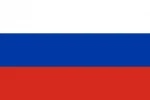About teaching the subsidiary mathematics syllabus as downloaded from the NCDC website

If you love literature books, stories & novel recommendations, join us on YouTube @GMBookshop
If you love literature books, stories & novel recommendations, join us on YouTube @GMBookshop
Introduction
Subsidiary Mathematics has been part of the Advanced Level curriculum for a long time but the Teaching Syllabus has not been in place. The National Mathematics Panel for Subsidiary Mathematics has designed a Teaching Syllabus to ease the teaching and learning of the subject The content of Subsidiary Mathematics has been reviewed. Some content in the previous syllabus has been removed while new content has been brought on board to address learning needs of the 21st Century student. The review has focused on
(i) the mathematics that is applicable in the world of work
(ii) reducing content to make it suitable to all categories of learners
(iii) equipping learners with mathematical skills that are desirable for further learing and in the world of work.
The current societal needs in Uganda have been a major factor during the identification of content to be added or removed from this subject. Only the relevant content has been retained
The area of application of knowledge acquired in each topic is provided in the background.
Purpose of the Teaching Syllabus
The Subsidiary Mathematics Teaching Syllabus is meant to guide teachers handling the subject at Advanced Level. It is designed to achieve the aims of teaching Subsidiary Mathematics, standardise teaching of the subject across the country and guide the teacher during the teaching and learning process. It is also meant to guide on how the mathematical skills and competences in this subject can be developed among the learners across the subject topics.
Aims of Teaching Subsidiary Mathematics
Teaching Subsidiary Mathematics is aimed at:
(a) enabling learners acquire a range of mathematical skills that are applicable in everyday situations and other subjects they may be studying.
(b) equipping learners to use mathematics as a means of communication with emphasis on clear expression.
(c) inspiring learners to develop an attitude of logical thought.
(d) building on the basic mathematical concepts for better understanding of the subject by every learner at A level.
(e) empowering learners to construct mathematical models by:
(i) developing mathematics to the limits of their ability.
(ii) applying mathematics with confidence to unfamiliar real situations.
(iii) specializing in mathematical techniques required for further education or vocation.
(iv) having a positive attitude towards mathematical problem solving (v) appreciating as far as possible the satisfaction and enjoyment that may be gained from pursuing the subject for its own sake.
(vi) presenting and interpreting mathematical information in diagrammatic, tabular and graphic form.
Target
This Teaching Syllabus is intended for the Subsidiary Mathematics A Level secondary school teacher. It can also be used by the learner for guidance of personal learning and practice of mathematical concepts identified in this syllabus.
Scope and Depth
The Teaching Syllabus covers Pure Mathematics, Mechanics, Probability and Statistics.
Teaching Sequence
The topics have been arranged in chronological order of skills acquisition.
You are advised to follow the teaching sequence for effective teaching and learning of the subject Subsidiary Mathematics should be allocated 6 periods, each of 40 or 45 minutes a week on the timetable. This is to allow enough time for learners to engage in a variety of learning activities and develop problem-solving skills. You are advised to expose learners to real world circumstances
Time Allocation so that they are motivated to apply mathematical knowledge and reasoning in real life as much as possible. Learning by doing' should be practiced.
How to Use the Syllabus
This syllabus focuses on developing mathematical skills for day-to-day application and further learning. Teaching and learning of this subject should focus more on skill acquisition development and application if the learner is to benefit from it.
The suggested teaching-learning approaches in this syllabus are not an end in themselves. The teachers are encouraged to devise other teaching strategies to enable the learners develop competences described in this syllabus.
Summative Assessment
This shall be done at the end of the two years of Advanced Level education by Uganda National Examinations Board. The examination will be formatted as follows: There will be one paper of 2 hours 40 minutes. The paper will consist of two sections: Section A and Section B.
Section A will comprise short questions on Pure Mathematics, Statistics and Mechanics while
Section B will comprise longer questions. Section A will consist of eight (8) compulsory questions. Candidates will be required to
attempt all questions each carrying 5 marks. Section B will consist of six (6) questions of which candidates will be required to attempt any four (4) each carrying 15 marks.
In Section B, Six (6) questions will be set from Pure Mathematics, Mechanics and Probability and Statistics.
 English
English French
French German
German Russian
Russian 中文
中文






